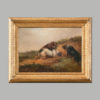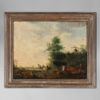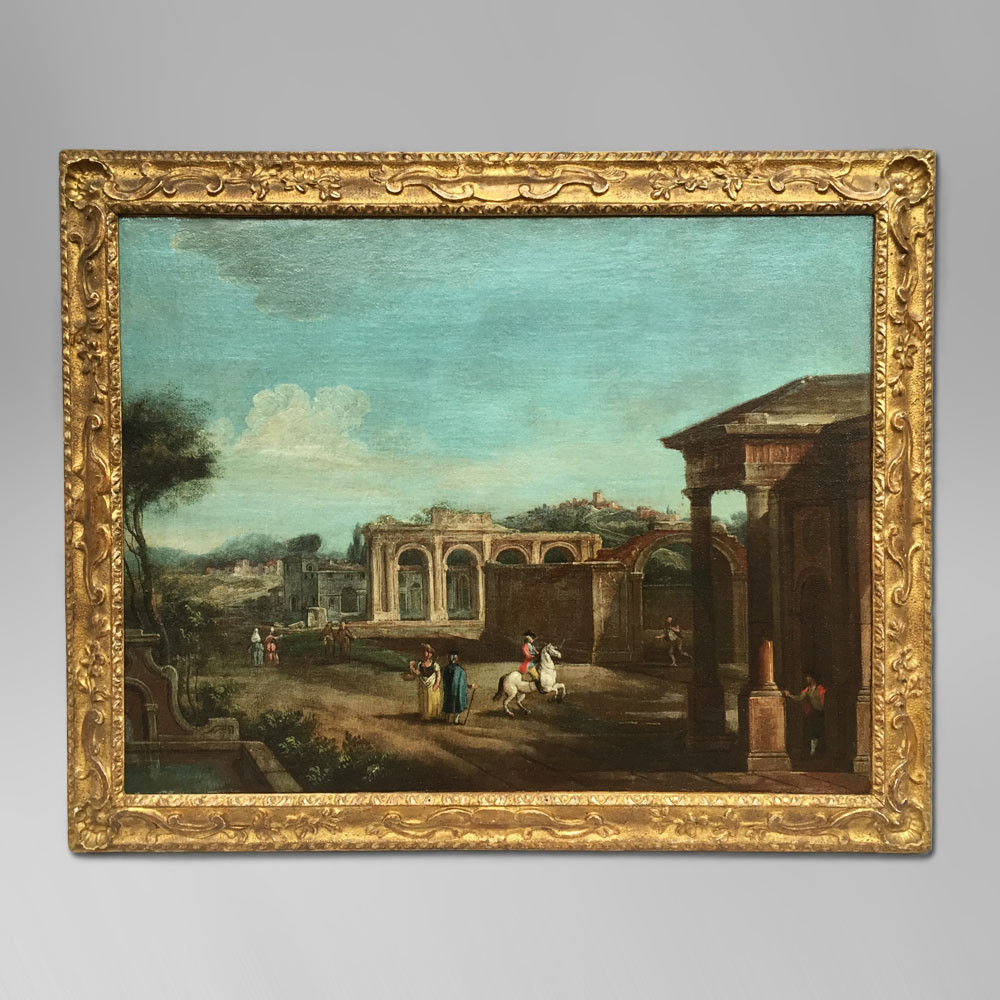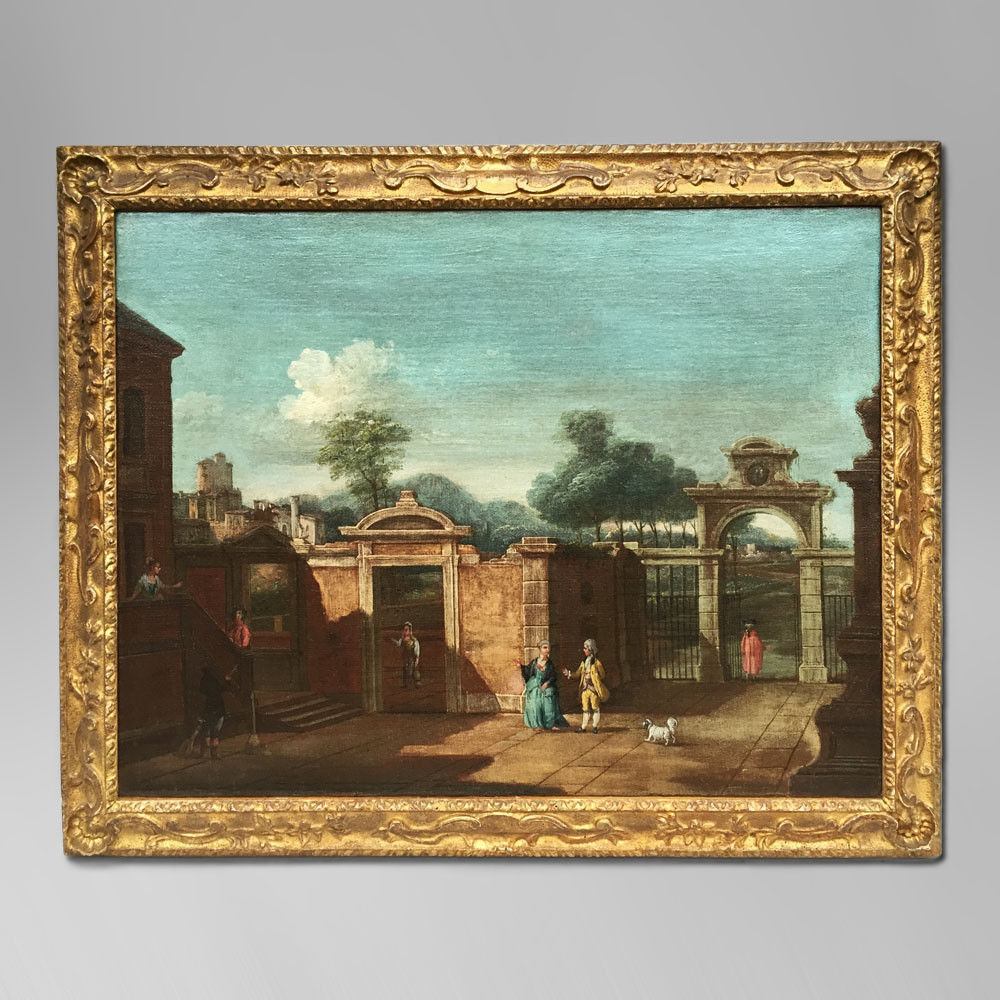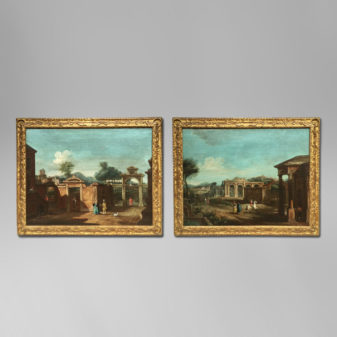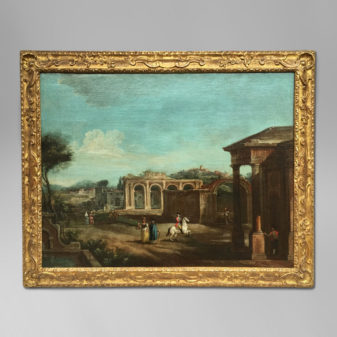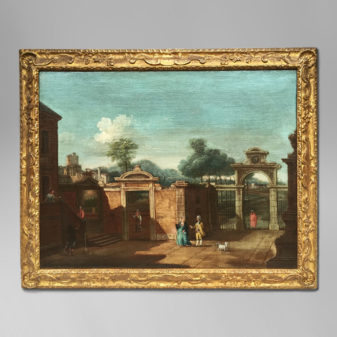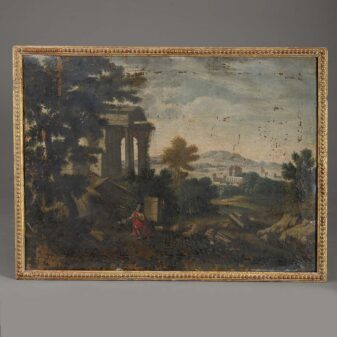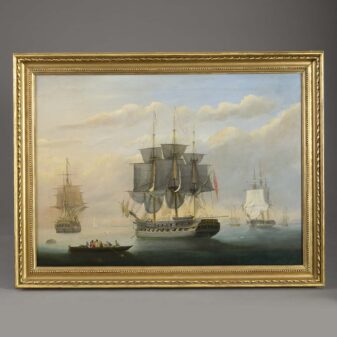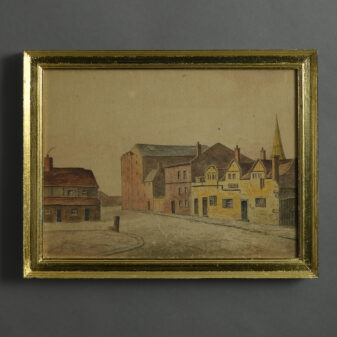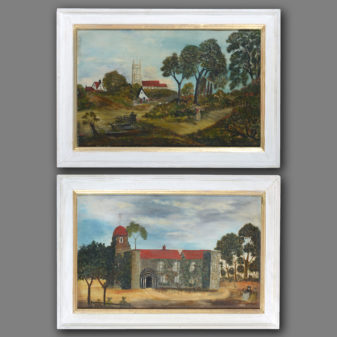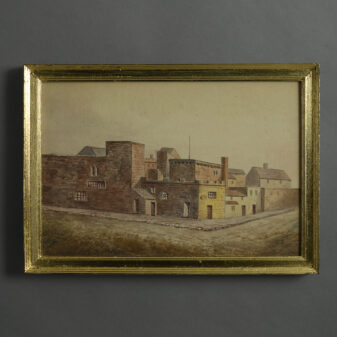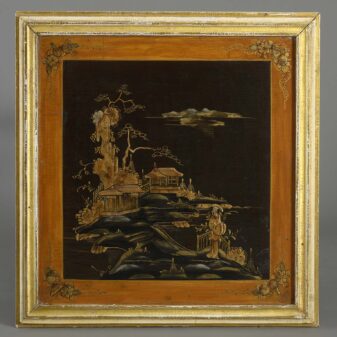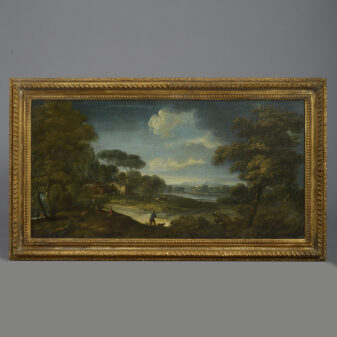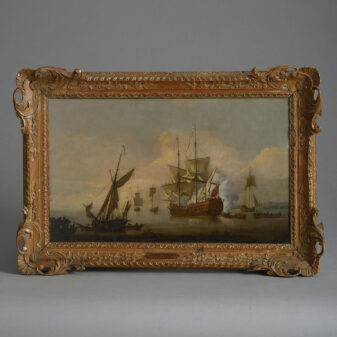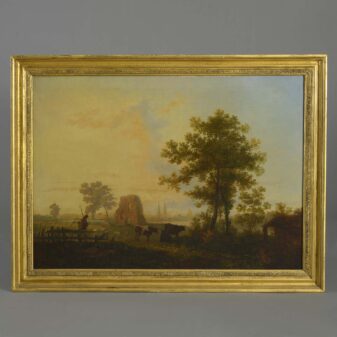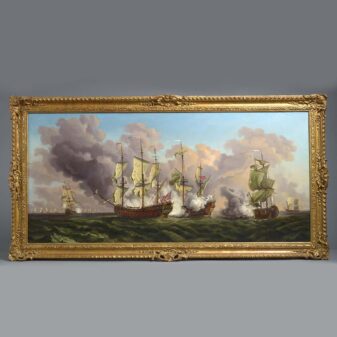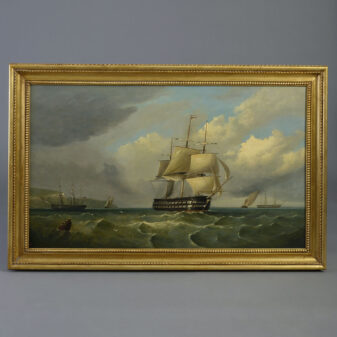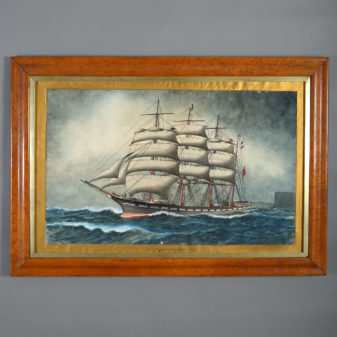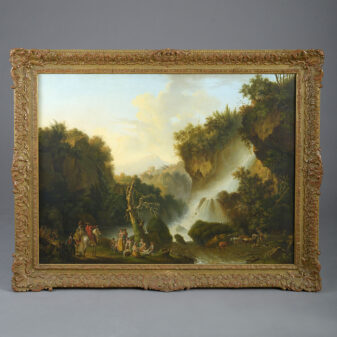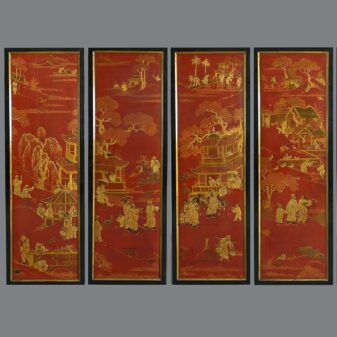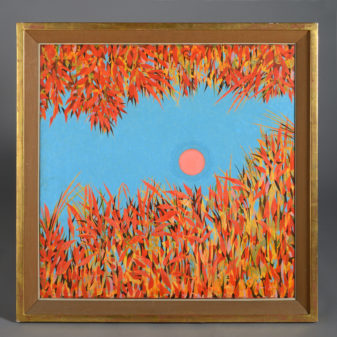An 18th Century Pair of Capriccio Landscapes with Figures before Ruins
£8,500
SOLD
A Pair of Capriccio Landscapes with Figures and Ruins
Oil on canvas
Provenance: Edmondo Sacerdoti, Milan; An Italian noble collection
These detailed architectural views, set within landscapes adhere to the popular Italian style of painting in the eighteenth century that deployed imaginary perspectives in the creation of elegant vistas.
The capriccio is an architectural fantasy, generally regarded as having come to prominence through the skill of Marco Ricci (b.1676 – d.1730). Ricci enjoyed popular success with his imagined views of ruins when he visited England in 1710. The style was later developed by Giovanni Paolo Panini (b.1691 – d.1765) whose works of Rome include views of the architecture arranged as pictures in a gallery. In the 1740s, Giovanni Battista Piranesi created possibly the most famous series of engravings entitled ‘Careci’ (Prisons) which, instead of the idealised views of Rome, created an imagined labyrinth of vaulted, subterranean spaces filled with all manner of industrial machinery. The creation of entirely imagined spaces moved the art of the capricci out of strict reality and gave artists the inspiration to invent architecturally fantastical schemes.
This pair of views brings a balanced and urbane order to its composition in terms of colour and structure. In the background there are views of hilltop Italian towns, while the foreground plays host to a gathering of refined architectural elements enhanced by figurative groups and individuals, all carefully positioned to entertain the onlooker. The use of primary colours for the clothing of those more prominently centred figures in both compositions draws the eye in to the action, contrasting with the soft colours of the stonework of the structures around them. Such compositions were avidly sought by Grand Tourists whilst traversing the Continent and especially Italy. Paintings such as these were very popular with British travellers and many can still be found in the collections of important English country houses, where they have hung since the 18th century.

